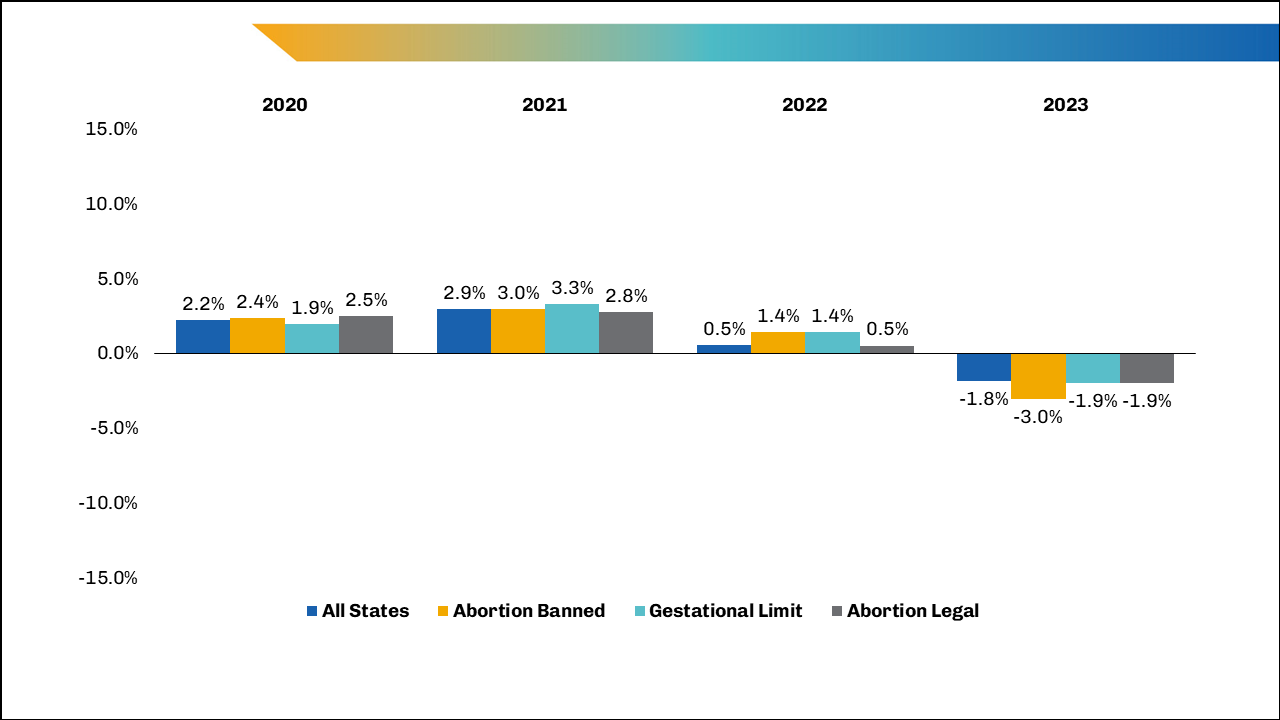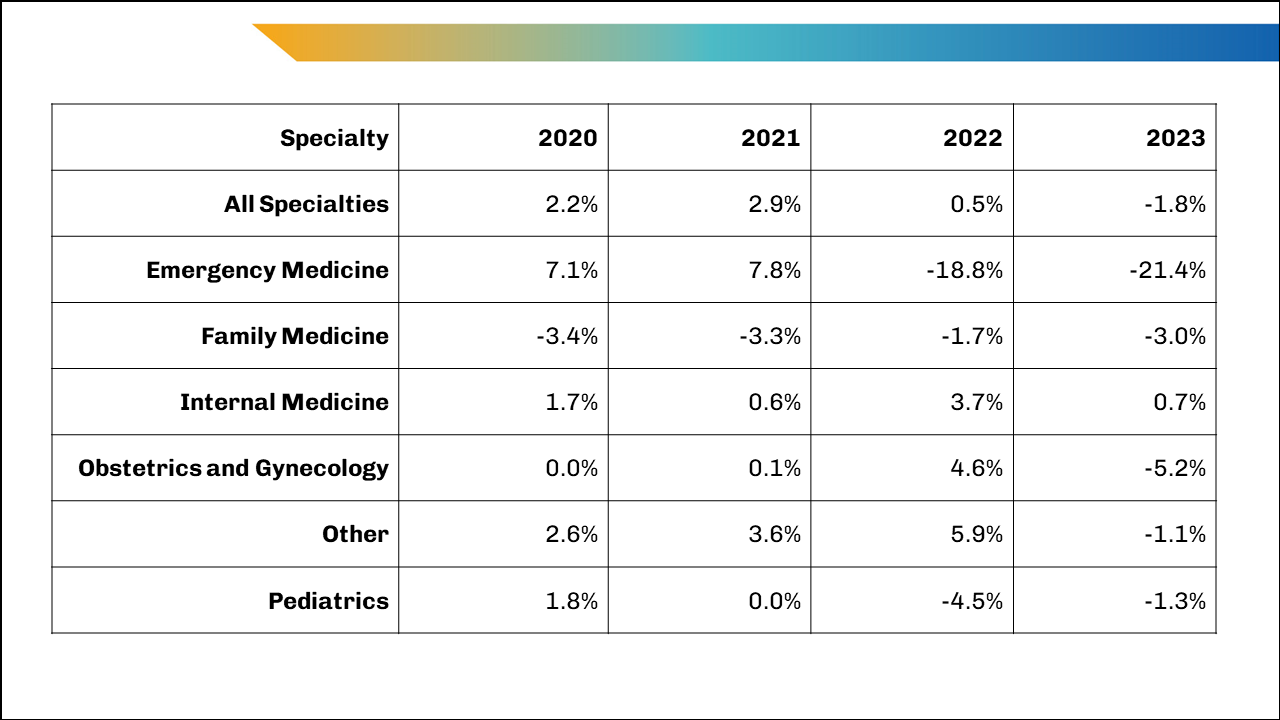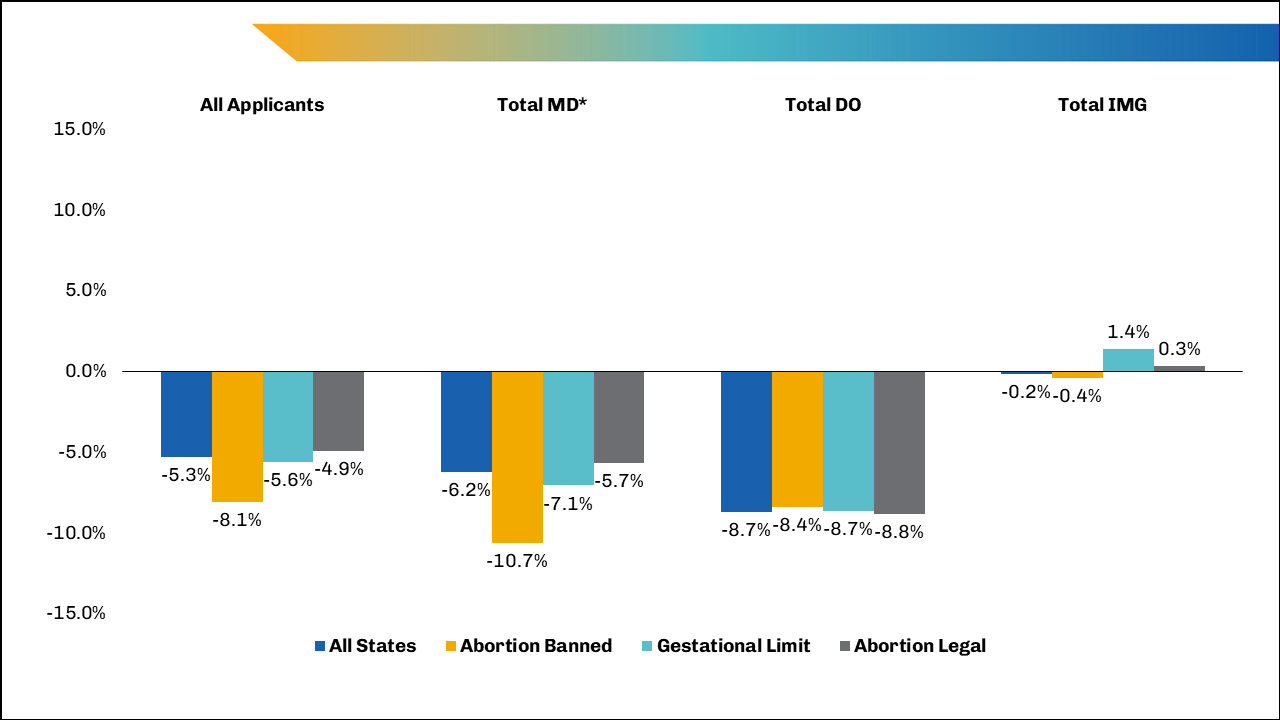For updated data from the most recent ERAS application cycle, see States With Abortion Bans See Continued Decrease in U.S. MD Senior Residency Applicants, published May 9th, 2024.
The U.S. Supreme Court issued its decision on Dobbs v. Jackson Women’s Health Organization in June 2022, just before the submission of residency applications through the Electronic Residency Application Service® (ERAS®), a centralized online application service. Since then, 13 states have enacted full bans on abortion. Because these policy decisions are likely to affect practice-location plans for physicians, state governments and health care leaders need to consider the potential impact of the decisions on the physician workforce. This snapshot examines residency application data by separating states into three cohorts: those with abortion bans, those with gestational limits, and those without gestational limits or abortion bans. While the number of unique medical school graduates, referred to as “U.S. MD seniors,” who applied to programs in all states declined in 2022-2023 from the previous application cycle, states with complete bans saw greater decreases in the number of U.S. MD senior applicants across specialties than states with gestational limits or no restrictions.
The number of U.S. MD seniors who applied to residency positions during the 2022-2023 application cycle1 decreased by about 2% from the previous year. The number of unique U.S. MD senior applicants to states with abortion bans decreased by 3.0%. We focused this analysis on U.S. MD seniors, who historically have the greatest chance of matching into specialties and programs of their choice compared with DO and international medical graduate (IMG) applicants; U.S. MD seniors are likely to be most sensitive to practice and training restrictions in states with total abortion bans or gestational limits on abortion.2
From 2022 to 2023, small decreases were observed in the individual number of applicants across ban status, though decreases were greater among applicants in states with complete bans (Figure 1). States' abortion-ban status is likely correlated with program number and size, but these early findings suggest that applicants may be responding to something independent of program size. In other words, while states with more severe restrictions are often less populous than other states, U.S. MD applicants may be selectively reducing their likelihood of applying to states with more state-imposed restrictions on health care regardless of the number of available residency programs.

Figure 1. Percent change in U.S. MD senior applicants from the previous application cycle by state abortion-ban status.
Changes in the number of applicants to specialties whose patients are most likely to be affected, including internal medicine, emergency medicine, family medicine, and obstetrics/gynecology, were examined separately. The largest drop in unique applicants across all states was seen in emergency medicine (-21.4%; -376 applicants); a 5.2% (-73 applicants) drop was seen in OB/GYN (Table 1).

Table 1. Percent Change in U.S. MD Senior Applicants From the Previous Application Cycle by Specialty
Detailed data on OB/GYN residency applications, including program-signaling data for the 2022-2023 cycle, will be analyzed separately. For more information on applicants and applications, visit https://www.aamc.org/data-reports/data/eras-statistics-data.
Similar to the trend seen for all residency applicants, the decrease in unique U.S. MD senior OB/GYN applicants year over year was highest in states with complete bans (-10.5%) and lowest (-5.3%) in states without restrictions (Figure 2). Given the small scale of changes in the number of applicants year to year, there was only a small effect observed in abortion-ban states from 2021-2022 to 2022-2023.


